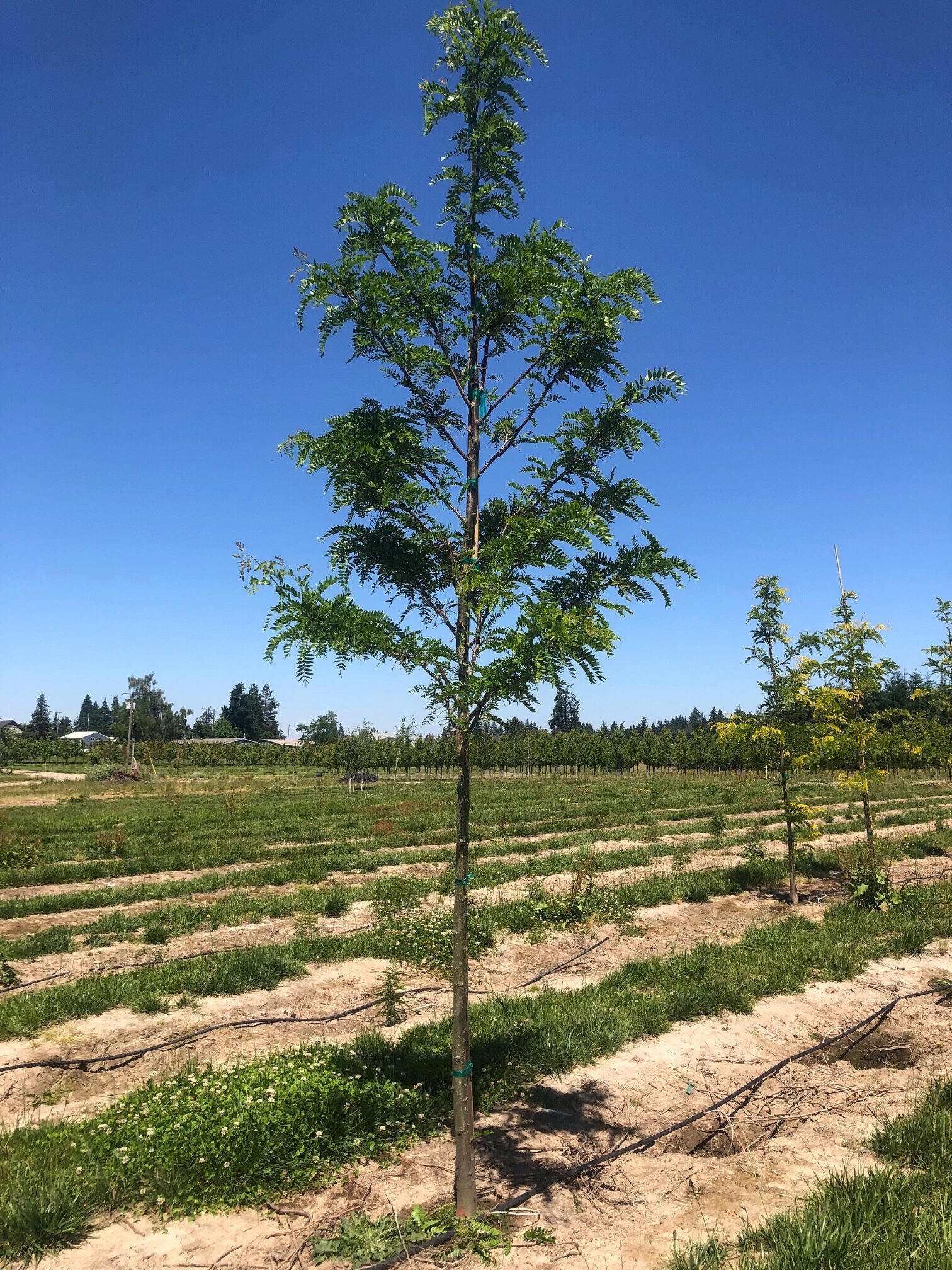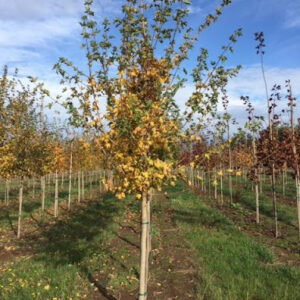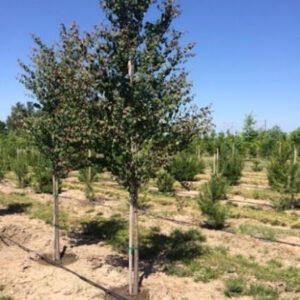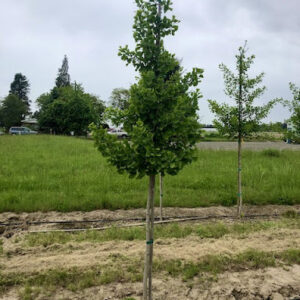Gleditsia triacanthos var. inermis ‘Impcole’ – Imperial® Honeylocust
$250.00
Botanical Name: Gleditsia triacanthos var. inermis ‘Impcole’
The Imperial® Honeylocust (Gleditsia triacanthos var. inermis ‘Impcole’) is a cultivar of the Honey Locust (Gleditsia triacanthos), a tree that is native to the eastern and mid-western United States. Gleditsia is named after a director of the botanical gardens in Berlin in the eighteenth century, Johann Gottlieb Gleditsch.
Imperial® Honeylocust is a thornless variety that is found growing naturally. Most cultivated varieties are thornless as most consumers desire trees without thorns. This honeylocust is one of the smaller cultivars available. It grows to a height of 30-40 feet and has a spread of 25-35 feet. It is also an almost seedless variety and grows in a compact vase-shaped form with a flat top.
The leaves of the Imperial® Honeylocust are an attractive dark green and pinnately or bipinnately compound. They are ovate in shape and grow to 0.5 to 1.5 inches long. These leaflets give the tree a beautiful fine texture and a brilliant yellow foliage display in the fall.
This cultivar is not particular about the soil it grows in or its pH level. It is tolerant of many different environmental conditions such as heat and wind. It has exceptional resistance to urban pollution, as well as drought conditions, and thrives in city landscapes. It is also a deer resistant plant. It is, however, susceptible to branches breaking during ice storms.
Product Dimensions
The purchased tree will be within the ranges below. If you require a specific size, please call us at
(503)585-8337
Please review Product shipping dimensions to ensure size of vehicle used for pickup of tree is sized correctly.
Click here for more information.
- Caliper Range p
- 1 3/4"-3"
- Height Range p
- 10-14'
81 in stock
| Shape |
Vase
|
| Flower Color |
Green, Greenish White, Yellow
|
| Flowering Time |
June, May
|
| Fall Color |
Yellow
|
| Growth Rate |
Fast
|
| Uses |
Park Tree, Shade Tree, Street Tree, Urban Landscapes
|
| USDA Zones |
3, 4, 5, 6, 7, 8
|
| Mature Height |
30'-40'
|
| Mature Width |
20'-30', 30'-40'
|
| Exposure |
Full Sun
|




